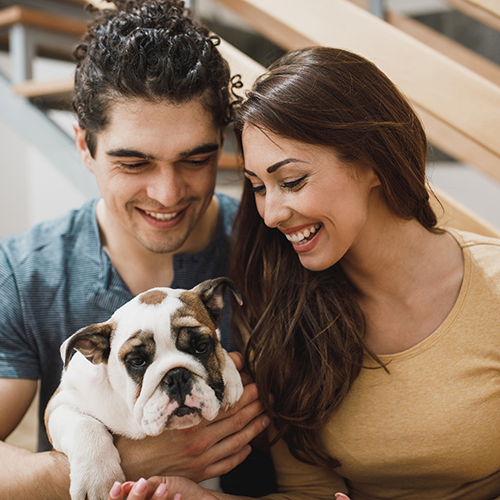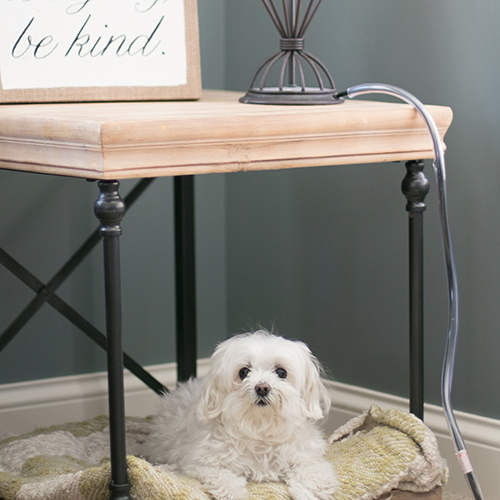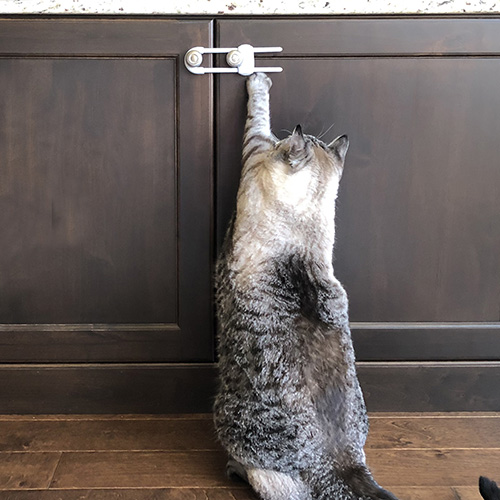How to Puppy Proof Your Home: 5 Pet Proofing Tips
Nov 11th 2021
Bringing home a newly adopted or rescued puppy but worried if your home is safe for them to move around without harming themselves? We bring to you a few tips on puppy-proofing your house to welcome your new furry family member.

Bringing a new puppy into the home, while exciting, can also be chaotic and challenging. Dog owners can probably tell you that they sometimes don’t anticipate all of the care necessary for a new puppy. This is because there are many other necessities to take care of first, such as securing a local veterinarian, looking into obedience training, as well as buying all of the dog’s food, supplies, and toys.
Puppy-proofing the home should also be a priority for pet owners. New puppies and adopted dogs are usually very energetic and curious, and they can surprise you by getting into many things around the house. And, since it will be the place your new dog will be spending its life, you must take precautions to ensure that your home is proofed and provides a safe environment.
So, what can you do to effectively pet-proof your home? Here are some of the top tips to ensure that you can make your house safe for your new pet.
Tip 1: Confine Garbage and Cords to a Secure Place
One of the first things you should do when going through your home is to check where your garbage is kept and keep it secure.
The smells that come from half-eaten foods will attract your pup, and they could accidentally consume something that’s not meant for them and may be toxic. They might also swallow something foreign that could create digestive or intestinal problems or even choking.
Be sure to tie garbage bags tightly and keep them away from your curious companion. Mischief Minder Strap Locks can be used to secure trash cans closed and keep them away from curious pets.
Cords are another choking hazard that needs to be secured, unplugged, and kept out of your pup’s reach. Your dog could get shocked or burn their mouth from chewing on an active electrical device.
It would be wise to invest in some tough cord protectors that you can put the cords in to keep your dog from finding them. It might also help if you ensure your dog has plenty of other things to nibble on, such as chew treats and toys.

Tip 2: Pick Up Small Items and Sharp Objects
If you have areas with smaller items like coins, rubber bands, or jewelry, be sure to keep those areas picked up and free from your dog’s curious nature.
Also, if there are children in the house, be mindful of picking up after them so that your dog doesn’t swallow or choke on any small toys or other objects.
Sharp objects should also be out of your dog’s reach. Things like razors, tools, knives, and even scissors could cause injury to your new puppy.
Electronics like batteries in remote controls or toys should also be kept secure since dogs may also swallow these, which are very dangerous.
Tip 3: Pack Away Drugs and Chemicals
Medications are a common way that pets can become poisoned, so take all of your supplements and medications and store them away in cabinets or drawers where your pup cannot get to them. You should also be careful when using them that you don’t drop any on the floor where your dog could get to them—it’s helpful to dispense them over a sink or a bowl.
Household cleaners, laundry detergents, glues, automotive agents, poisons for mice or rats, and more can also be toxic to animals. So those kinds of things need to be locked up, kept on high shelves, or behind doors with cabinet locks.
Antifreeze is incredibly poisonous for dogs because it is appealing to them, so when servicing your car, be mindful of any spills.

Puppies are still developing, so their bones are very fragile in the early stages of life. If your dog tries to jump up on the couch or at someone, they could potentially injure themselves. Keeping your puppy off of high furniture and sitting when holding your dog will help provide less chance for them to do a lot of jumping.
It also helps to keep doors and windows closed so that your dog doesn’t escape or, worse, fall out. You should also tie up the cords if you have blinds so that your dog doesn’t get tangled up in them.
Keep toilet lids closed as well so that your pup doesn’t try to drink out of it (especially if you have used any cleaner) or accidentally fall into it. Mischief Minder Strap Locks can be used to puppy-proof your toilets if your pet is very persistent.
Tip 5: Provide Your Puppy With Their Own Space
There will most likely be times when no one is home to keep an eye on your new pup. While as a new pet owner, you will want to keep this to a minimum, you can contain the puppy in their own room or space.
You might want to invest in a pet gate or a play yard to keep your dog confined in a room, such as a kitchen or a mudroom, to keep them out of things and in case they have an accident while you are away.
You might want to invest in a pet gate or a play yard to keep your dog confined in a room, such as a kitchen or a mudroom, to keep them out of things and in case they have an accident while you are away.
Your dog’s space should also be a safe place where they can retreat. Make your pet's space feel like home with their food and water dishes, toys, and bed. If you use a crate or pet gate, you have the added benefit of taking those things with you when you travel so that your dog can still be provided the comfort of their safe area.
The Best Care for Your Puppy
All of these things are essential to helping your pet stay safe and become used to its new surroundings in your home. However, you also can take time to do some research ahead of time and ensure your home is entirely puppy-proofed and ready for your new furry friend.
Even though you may do all you can to help secure your environment, unfortunately, accidents can still happen. Bond vet online help allows you to ask a veterinarian online without having to wait for an appointment, so you can quickly find a solution. If nothing else, it may help to provide you with some peace of mind. So if for any reason, you become concerned with your pup’s behavior or feel worried over something that it may have gotten into, you can always reach out and call the vet.
Now that you have taken all of the precautions and double-checked your home, you can feel confident that your puppy is ready to thrive in your pet-friendly home.
Shop our new pet proofing line, Safety Paws! It includes products that can be used to pet proof any area of your home and that are designed to keep our furry friends safe and protected.
